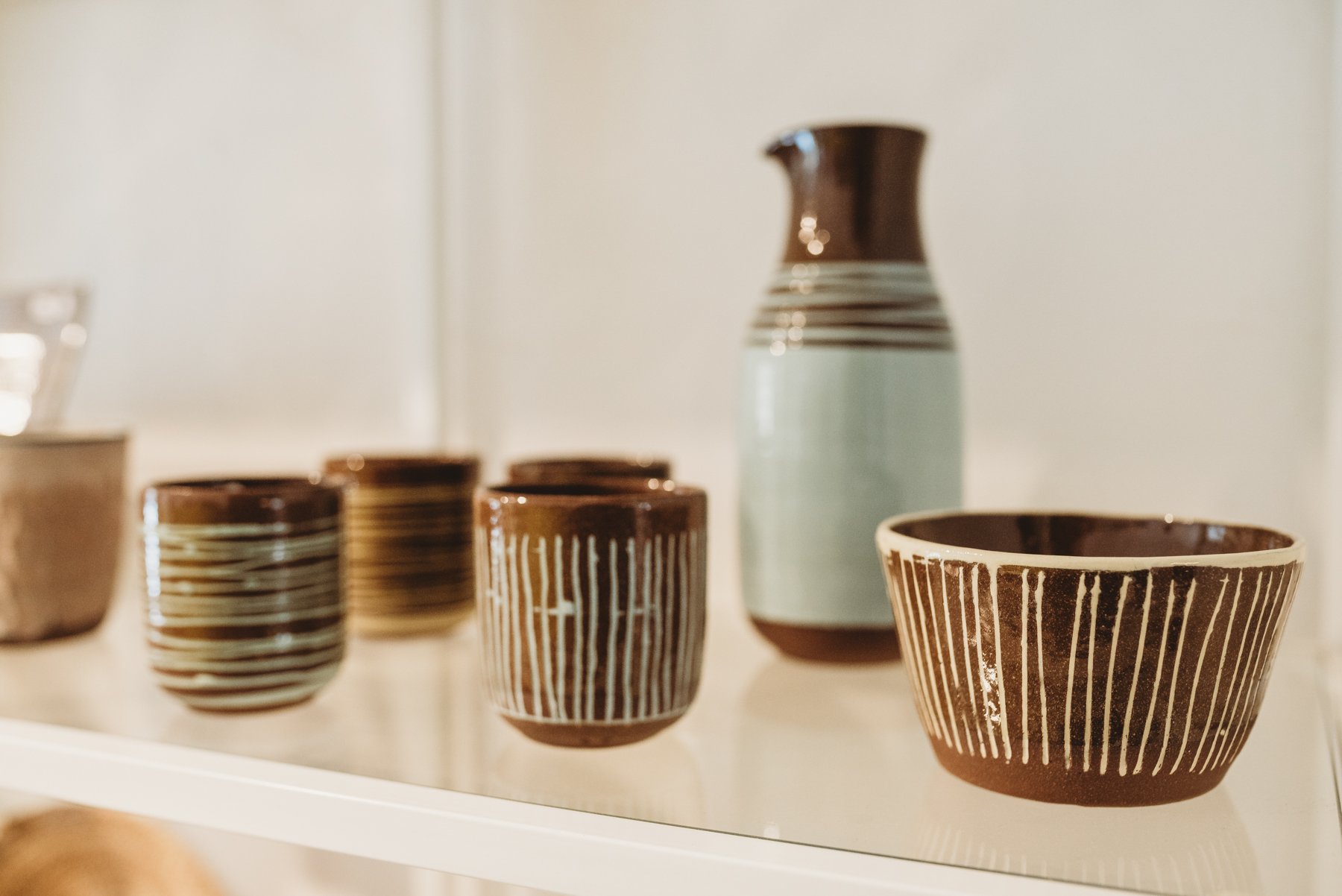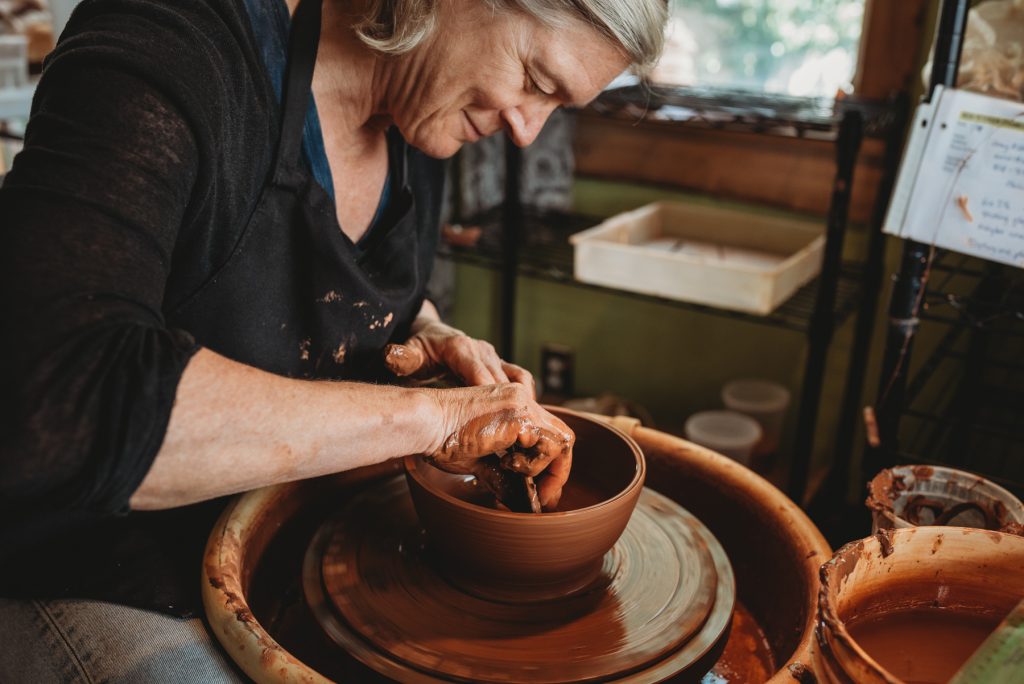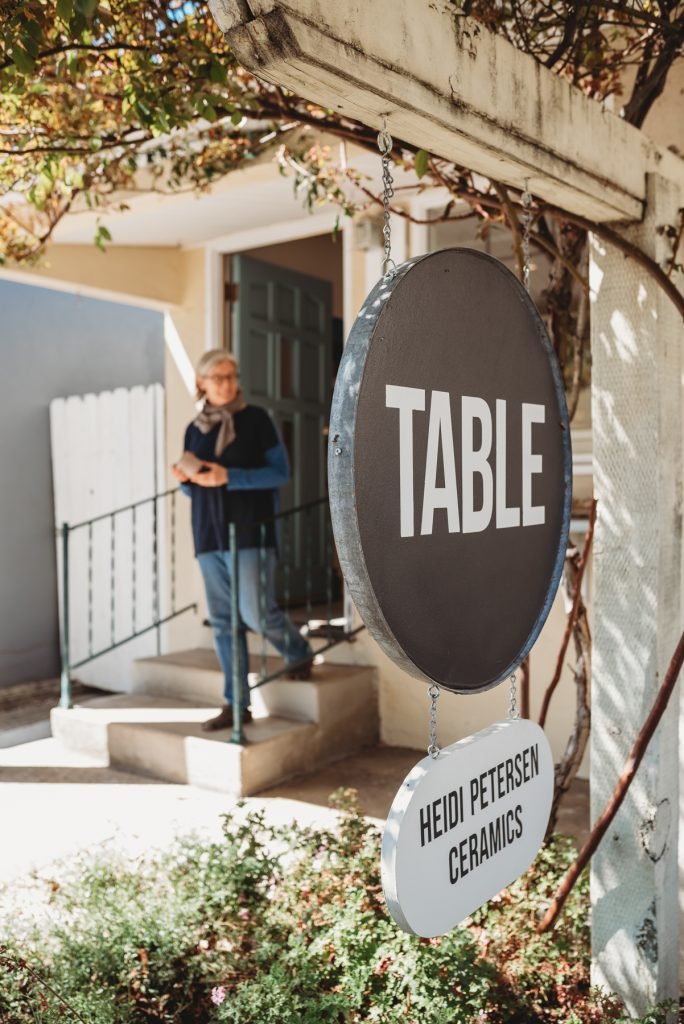
Perfectly Plated: Clamoring For This Potter’s Specialty Dishware
In a small ceramics studio on Atascadero’s Entrada Avenue, Heidi Petersen turns up the thermostat a couple notches as she takes a break from throwing pottery.
“I keep it cold in here because it gets really hot when I fire the clay,” informs Heidi. The kiln is firing often these days, as Heidi works long days to fulfill orders of custom dishes and plates for restaurants throughout San Luis Obispo County, like Fish Gaucho in Paso Robles and Blue Heron in Los Osos.

You may have eaten some of the area’s finest meals off her plates without a clue about the artist who spends her days cuddled up against a pottery wheel, her hand speckled with clays and glazes, handcrafting the serving dishes. She says her original tableware captures the spirit of the natural environment.
Perhaps you are more likely to notice the intricacies of Heidi’s designs against the white backdrop of the shelves at her gallery, Table, than if they were outside, where the earth-inspired composition of her bowls could be tough to spot among the trees.

“I like to show off the natural materials,” she says. “It’s just that I put heat on it instead of the earth putting heat on it.” Her work is not simply a hobby; it’s a passion that’s now on full display in restaurants across north county.
Heidi’s connection to the dirt beneath her studio is one she developed in what she refers to as her “first life,” when she worked in the agriculture sector developing eco-friendly pesticides about 16 years ago. After leaving her traditional job, one she’d obtained specialized schooling for, Heidi decided to go back to school — this time it was a ceramics class at Cuesta College. She immediately fell in love with the way the cool smooth clay danced across her fingers as it spun on the wheel. The red and brown clay really caught her eye.
”I don’t use white clay,” Heidi adds. “White clay is easier to work with, but it’s boring.”
After she opened a studio with some friends, Heidi’s work took off in a way that not only dazzled gallery hoppers but also a local restaurateur.

The new owners of Cass House came across Heidi’s work and loved it so much, they wanted her bowls and plates to be the vehicles for their menu offerings. When her friends later came to visit, Heidi took them to Cass House to see her work on delicious display. “It was so exciting to see the food come out on my plate,” she reminisces. “I gave (the server) a big hug.”
That excitement never left her, even as she found herself crafting dishes for more and more clients, like Dark Nectar in Atascadero and now, two new spots opening in the Paso Market Walk.
“We’re drawn to people who support and champion others,” Julie Fischer, co-owner of Paso Robles Wine Merchant, says. “Heidi celebrates the local community and other artists in her shop. That really appealed to us.” When Julie and her husband Justin were searching for serving dishes for their new restaurant in the Paso Market Walk, they were drawn to the earthy aesthetic in Heidi’s work.
“It complements our food,” Julie declares. “We are really focused on pure expression of pure ingredients.” Paso Robles Wine Merchant offers dishes like vegan pozole verde, seasonal shepherd’s pie and various seasonal local vegetable options, as well as eight different local wines on tap. The couple knows the presentation of their food is critical to the overall experience of their guests.
“Dishware and food go hand in hand,” Julie says. The 40 pieces that the Fischers ordered from Heidi feature a lighter clay with white speckled glaze, a look Julie describes as “organic.”
Momotaro, a ramen-wielding neighbor of the Fischers in the Paso Market Walk, will also serve up meals on dishes molded by Heidi’s hands. “You eat with your eyes first,” Momotaro owner and chef Mateo Rogers says. “The dish complements the food on it.”
Mateo says Heidi’s work is the perfect partner to his ramen, which he believes embodies a traditional Japanese sentiment. “Let things be natural,” Mateo explains. “Heidi brings that to the table.”
For Heidi, the opportunity to have her work showcased in restaurants is deeply satisfying but at times a challenge. Though the nature of her business literally involves the food industry, Heidi adds she may not be a starving artist but her work is more about passion than profit. “I’m surviving and paying rent,” she says. “I’m not relying on my husband, but I am an artist.”
As popularity for her work grows and the orders flow in, Heidi finds it increasingly difficult to strike the balance between doing commercial work and personal projects that scratch her creative itch.
“Sometimes you say, ‘I just can’t throw 20 pieces [of pottery], I just want to hit some things with a stick,’” Heidi reveals, referring to one of her creative processes where she literally hits the wet clay with a stick. “But I’m happy here in this studio. I want to keep this going.”

